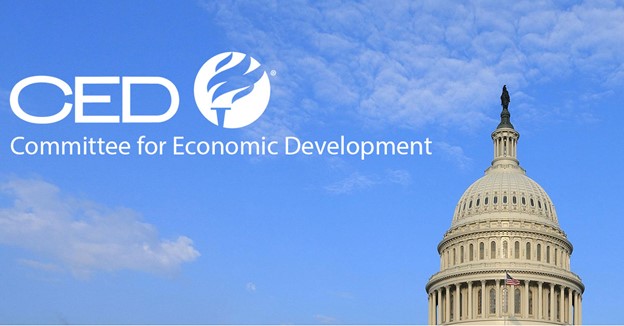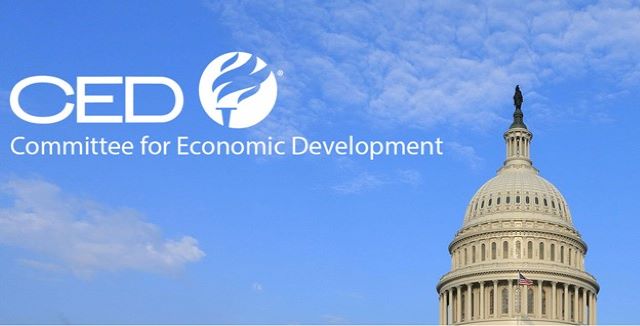The current pandemic has created major disruption for virtually all organizations, bringing with it the threat of budgets cuts, the looming specter of potential furloughs and layoffs, and a rapid shift to work-from-home for those fortunate enough to be able to do so. In this climate, creating an excellent onboarding experience for new employees can easily be deprioritized. But now more than ever, onboarding will play a critical role in shaping employee experience and could powerfully influence downstream productivity, retention, and engagement.
Companies that swiftly pivot to virtual onboarding processes can demonstrate to new employees their agility and resourcefulness.
The pandemic also provides a unique opportunity to test the benefits and limits of virtual approaches, collect data on their impacts, and create new strategies for the future that are informed by, and ultimately improved by, the current crisis. This report highlights nine approaches to help organizations conduct successful virtual onboarding during and after the pandemic:
- Welcome new hires through creative, unique ways to strengthen understanding of corporate mission and values. Amid the global pandemic, organizations should seek alternative, innovative ways to welcome new hires when in-person interaction is no longer feasible. These activities should define the brand, the company, and the team, helping new hires quickly assimilate the corporate mission, vision, and values. For example, instead of directing new joiners to an employee handbook, Dunkin’Donuts delivers its welcome message to every new employee via a new hire video.1 In the video, the president introduces himself and articulates the company’s goals by showing what they look like through day-to-day tasks. Other organizations send small gifts to welcome new hires prior to their joining: one US-based telecommunications company sends a fruit basket to new joiners’ homes. Another retail company offers new joiners gift cards to purchase employer-branded merchandise online to increase a sense of belonging. PepsiCo prioritizes having employees pay close attention to their health; therefore, it mails new hires a fitness tracker as a way of motivating them to exercise more.2
- Equip new hires with appropriate tools, technology, and equipment to set up a home office when necessary. As many new joiners now have to work their first days and weeks from home during the pandemic, organizations should create a process to ship the essential tools and equipment (e.g., laptop, headset) to new hires’ homes before their first day. Offer new joiners expense reimbursement for purchases of monitors, keyboards, and other essential equipment that help boost productivity in a virtual environment. InVision, a US-based digital product design firm, reimburses its remote employees up to $500 for proper furniture (e.g., desk, chair) and other essential equipment.3 Hiring managers should follow up with new hires to ensure they have all the equipment they need to perform tasks. To help managers track the process, a multinational technology company has been using an app for years to provision equipment, access, and training for new hires.4 The provisioning app sends hiring managers push notifications when deadlines are approaching. Once a home office is set up, it’s important for organizations to continue providing new hires with 24/7 remote IT support to solve technical issues, including how to use a VPN and ways to handle unexpected service interruptions.
- Conduct virtual orientation and training. Following stay-at-home guidelines, organizations should quickly convert in-person orientation to user-friendly virtual learning materials. For example, Hormel Foods Corporation deployed Discovery Map®, a gamified platform that allows new joiners to learn about the company quickly.5 Some other digital platforms can track learner engagement by identifying when the user opens other windows or scrolls through content too quickly. These capabilities become especially useful in ensuring that virtual new joiners are engaging with content appropriately. If not already planned, hold an orientation follow-up session to address new joiners’ questions and concerns.
- Engage new hires in virtual gatherings to help accelerate integration and establish a network. At large organizations, it’s common for multiple new joiners to start on the same day or in the same month. Organizations may create a virtual peer group/cohort of new hires who share a start date/month to facilitate their engagement with one another and help build their internal network from day one. Hiring managers should also include their new employees in all virtual gatherings such as team status calls and virtual social events to integrate new hires quickly. Set up a team meeting on new hires’ first day and have all team members introduce themselves. Some organizations may have also planned a budget for new joiners to travel to headquarters; during the pandemic, consider redirecting those resources to virtual engagement.
- Set specific and realistic goals to define expectations. In virtual work environments, new joiners usually don’t receive day-to-day oversight from their managers and may feel overwhelmed, lost, or incompetent. Goal setting, as a result, has become more important than ever to ensure new employees have clear directions to follow and remain productive. At Salesforce, new hires are required to write and publish a goal plan called “V2MOM (Vision, Values, Methods, Obstacles, Measures)” within their first 90 days.6 This exercise not only enables organization-wide goal alignment, but it also serves as a powerful tool for individual new employees to find their unique purpose in the company.
- Conduct frequent virtual manager-employee check-ins to offer support and track work progress. A study shows that 72 percent of employees see one-on-one conversations with their direct manager as the most important aspect of their onboarding process.7 Managers should set up frequent online check-ins with their new direct reports to help resolve problems, track performance, and provide emotional support. During the COVID-19 pandemic, a good manager should also pay attention to new hires’ physical well-being by asking questions like “How are you feeling today?” Onboarding professionals should provide managers with updated onboarding checklists and conversation guides to help facilitate these discussions.
- Provide virtual peer mentoring/coaching to assist and engage new hires. In a previous study by The Conference Board, business leaders and supervisors ranked provide peer coaching and mentoring opportunities as the number one valuable practice to support team engagement in the future.8 This is because new hires sometimes have concerns or questions that they aren’t comfortable sharing with their direct managers. Peer mentoring, especially in this uncertain and difficult time, can help relieve stress and anxiety by addressing some of the issues. Create a peer mentor or buddy program quickly (if your company doesn’t already have one) and encourage peer mentors/buddies to engage with new joiners more frequently than they normally would through various channels (e.g., email, video call, cell phone).
- Measure effectiveness of virtual onboarding. Although virtual onboarding during the pandemic may create inconvenience and require additional effort for both companies and new hires, it also provides a great opportunity for organizations to assess the feasibility of conducting virtual onboarding on a larger scale in the future.Put in place a process to collect and evaluate data on new joiners’ retention, engagement, and productivity to gain insights into the effectiveness of virtual onboarding approaches and to inform future decision making. For example, DigitalOcean distributes its New Hire Survey on days 7, 30, and 90 to help its People Team understand the experience of new hires and make sure they receive what they need to succeed in the longer term.9
- Communicate frequently with new hires who haven’t yet started to provide regular updates. Recognizing that the residual impacts of the pandemic on the business may be long-lasting, onboarding professionals need to leverage company-specific scenario planning to define new hire strategies in response to or anticipation of sharp budget reductions. A few HR leaders from different companies told The Conference Board that they would not rescind offers but would postpone new hires’ start dates. When possible, ask new hires if they can postpone their start date without financial hardship. Even if decisions have not yet been made about summer interns and college graduates who were originally scheduled to begin in May or June, it’s critical that communication happen immediately and frequently.
| |
This report is part of the larger Human Capital Management during COVID-19 series created by The Conference Board to help HC leaders navigate the effects of the pandemic with their employees. The series reflects not only the latest research (ours and others') but also the comments and insights from our Members as they address this unprecedented challenge. To see the other reports in the series, visit The Conference Board COVID-19 Pandemic Resources & Support for the Human Capital Community.
|
|
Related Resources
Dawn Klinghoffer, Candice Young, and Dave Haspas, “Every New Employee Needs an Onboarding ‘Buddy,’” Harvard Business Review, June 6, 2019.
Gallup’s Perspective on Creating an Exceptional Onboarding Journey for New Employees,” Gallup, 2019.
Mark Stein and Lilith Christiansen, Successful Onboarding: Strategies to Unlock Hidden Value within Your Organization (McGraw-Hill Education, 2010).
1 Jen Dewar, “Employee Onboarding Examples to Inspire Your Own,” Sapling, April 3, 2019.
2 “6 Awesome Employee Onboarding Examples,” TalentLyft, November 21, 2019.
3 Dewar, “Employee Onboarding Examples to Inspire Your Own.”
4 Theresa Ludvigson, “Onboarding Hacks: How to Deeply Engage New Employees,” Salesforce, May 5, 2019.
5 Chiradeep BasuMallick, “10 Best Onboarding Experience Strategies for Your 2020 Hires,” HR Technologist, November 19, 2019.
6 “Organizational Alignment: Write a V2MOM,” Salesforce Trailhead.
7 Isaac Leung, “How Does Employee Onboarding Impact New Hire Retention and Turnover Rates?” Enboarder.
8 Amanda Popiela, Robin Erickson, Rebecca Ray, and Amy Ye, DNA of Engagement: How Organizations Create and Sustain Highly Engaged Teams, The Conference Board, February 2019.
9 Olivia Melman, “How We Created a People-First Hiring Experience,” DigitalOcean, September 5, 2017.



